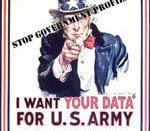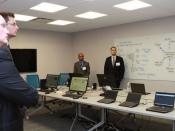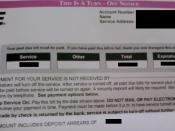KEEPING YOUR DATA PRIVATE
The use of private data saved within computer technology has increased over the past decade dramatically. Medical reports, bank accounts, police profiles and personal information are all examples of private data. Nowadays all this information is stored
within a database that can be accessed at any time when the user wants to view it. Because of this easy access, unauthorised users are capable of viewing this private information at their own will. This moral right of privacy to an individual is breached and therefore forfeits its privacy.
Private records and information that are obtained in computer databases require the best available physical and electronic security available. This will ensure that all data is only accessible to authorised users. Without adequate security, almost any user could log onto these private records and view them accordingly. This opens the information to the public which defeats the whole purpose of the data being private.
If large companies that contained private data did not have a strong security regime, the public would have no limit to accessing the company's files. These files can be tampered with, deleted or even stolen.
"The range of matters regarded as private embraces much of what could be referred to as a person's inner self." (Miller, S., Charlest Sturt University)
For example, if others know how an individual votes, their right to freely support a particular candidate might be undetermined. If business competitors have access to a companies plan they will gain an unfair advantage. For this information to remain private and personal, security authorizing the user to view their data needs to be in practice.
There are many ways an individual can keep his/her information and data private. Some examples are passwords, encryption techniques, Identification cards and numbers, retinal scans and finger scans. These...



Okay
This is an okay essay, it gives a lot of information and isn't too hard to read. For your grade level it seems to be well written too. You might want to consider revising your final paragraph so it draws the entire essay together, and doesn't give what seems to be new information.
2 out of 2 people found this comment useful.